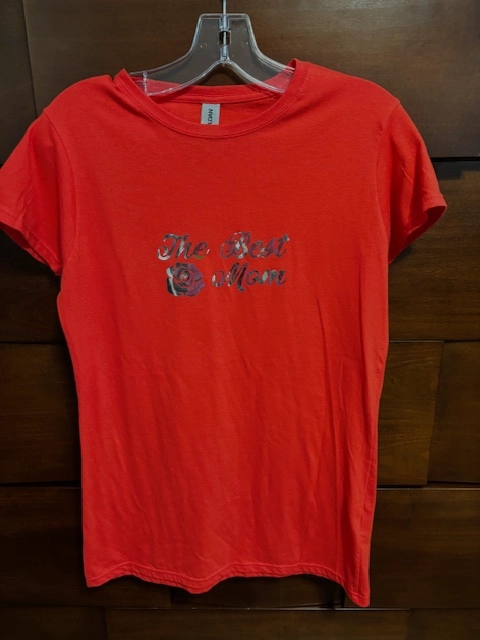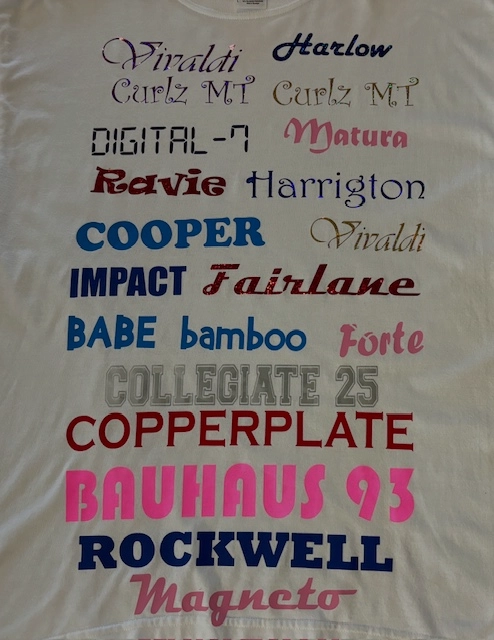Customized Lab Coats with Embroidery for Medical Professionals
Customized Lab Coats with Embroidery for Medical Professionals
Blog Article
The Art of Custom-made Embroidery: Opening the Tricks to Creating One-of-a-kind and Remarkable Layouts
The tricks to creating custom needlework styles that captivate the eye and leave a long-term impression lie in a delicate balance of strategy, imagination, and attention to information. As we dive into the world of customized embroidery, we discover the nuanced interaction between string selection, sew complexity, and layout customization that raises a simple garment to a job of art.
Selecting the Right Embroidery Threads
When choosing needlework strings, what essential aspects should you take into consideration to guarantee the most effective outcomes for your custom designs? The option of needlework string is crucial in identifying the last result of your stitched layout. Among the primary considerations is the material of the thread. Various products such as cotton, polyester, rayon, and silk use differing degrees of luster, resilience, and structure. It is important to select a thread material that complements the fabric you are embroidering on and aligns with the desired look of the design.
Thicker threads can include dimension and texture to your style, while finer threads are excellent for complex details and little text. In addition, considering the shade fastness and washability of the thread is critical to guarantee that your custom layouts maintain their top quality and vibrancy over time.
Exploring Various Stitch Methods
To dive into the world of 'Exploring Various Stitch Techniques', one need to grasp the details and nuances that each stitching approach gives the art of needlework. Different stitch methods not just add visual rate of interest but likewise add to the overall structure and measurement of the design. One prominent stitch strategy is the satin stitch, which involves carefully stuffed parallel stitches to create a smooth and shiny surface, perfect for completing shapes and developing vibrant details.
On the other hand, the backstitch is a flexible strategy frequently made use of for outlining and including great information. It involves stitching backwards to develop a strong line of embroidery. Furthermore, the French knot stitch includes a responsive element to designs, best for developing distinctive accents like flower centers or decorative touches.
Checking out various stitch strategies permits embroiderers to have fun with light, darkness, and deepness within their designs, raising the visual allure and imaginative top quality of their embroidery projects. By understanding numerous sewing approaches, one can open countless possibilities for producing one-of-a-kind and remarkable custom needlework items.
Incorporating Personalized Layout Aspects
Having actually explored the intricacies of various stitch techniques such as the satin stitch, backstitch, and French knot, the emphasis now changes in the direction of integrating personalized style elements in personalized embroidery tasks. Customized layout aspects play a crucial function in making embroidery jobs truly special and memorable.
An additional way to integrate personalized style components is by including icons or motifs that hold unique definition to the recipient or reflect their passions and personality. Integrating a favored flower, animal, or hobby-related sign can make the embroidery layout more meaningful and individualized. Additionally, choosing colors that reverberate with the recipient or straighten with the intended theme can additionally boost the customization of the embroidery project.
Mastering the Art of Color Sychronisation

One key element of shade coordination is recognizing shade theory. This consists of recognizing how Related Site different shades interact with each other, the feelings they share, and how they can be integrated to develop visually attractive styles. By using shade theory principles, embroiderers can produce unified shade palettes that improve the general appearance of the layout.
Additionally, taking notice of comparison is critical in color sychronisation. Making use of contrasting shades can help certain aspects of the style pop, enhance readability, and develop a visually dynamic embroidery piece. By mastering the art of shade sychronisation, embroiderers can boost their layouts and create remarkable pieces that resonate with clients and audiences alike.
Enhancing Structure With Advanced Needlework Stitches

French knots, for instance, are best for including tiny, elevated dots to your design, mimicking the look of beads or creating a textured surface. Bullion knots, on the other hand, can be used to create twisted, ropelike elements that add a lavish feeling to the needlework. Seed sewing includes small, scattered stitches that can fill up in locations with a multicolor structure, while turkey work creates fluffy, dimensional accents reminiscent of animal hair or vegetation. Trying out with these innovative needlework stitches enables you to push the boundaries of traditional embroidery and develop absolutely one-of-a-kind and aesthetically attractive structures in your designs.
Verdict
In final thought, the art of customized needlework includes a combination of picking the ideal threads, discovering different stitch strategies, integrating customized design components, mastering shade sychronisation, and boosting structure with advanced click for more info stitches. By comprehending and executing these vital aspects, embroiderers can develop special and memorable layouts that showcase their creative thinking and skill. Needlework enthusiasts can open the secrets to producing beautiful and custom pieces that stick out and leave a lasting perception.
Report this page